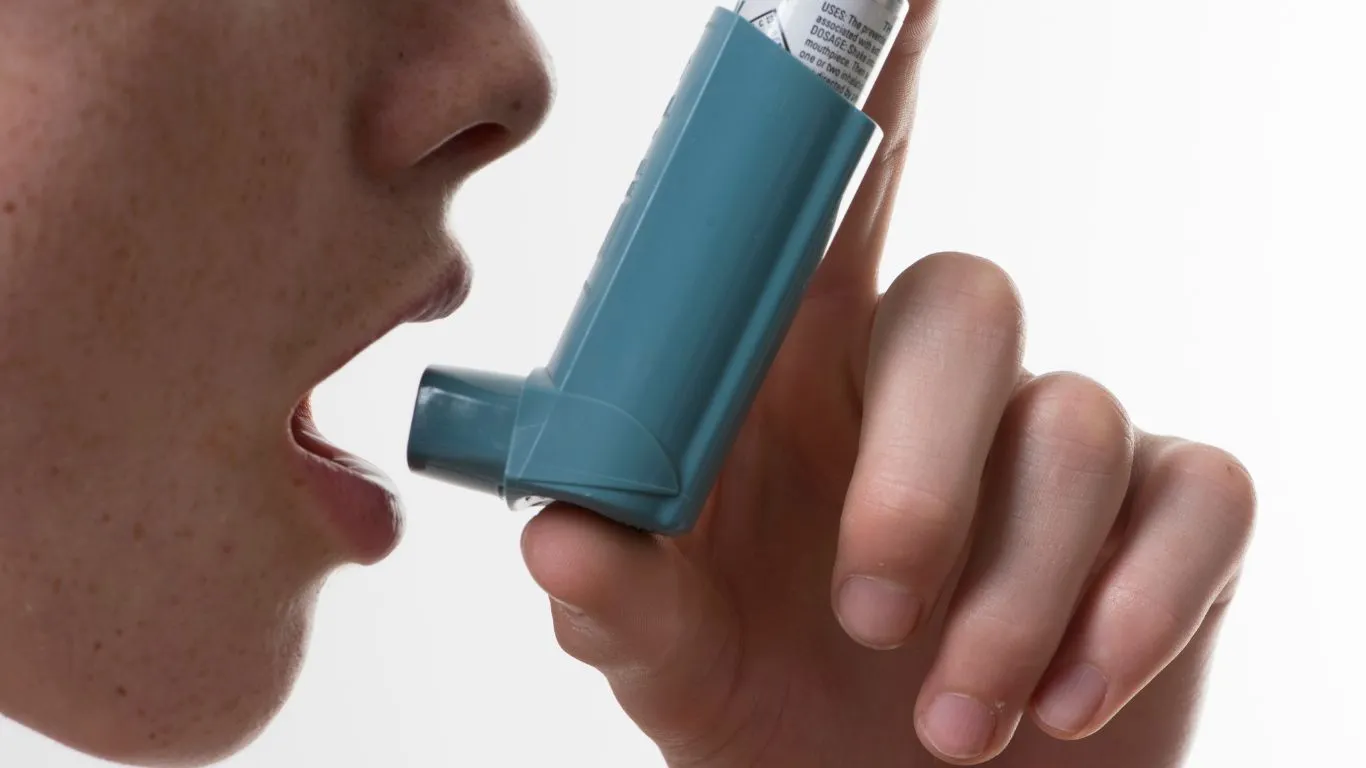Best Chest-Opening Stretches for Asthma to Improve Breathing
As a pulmonary nurse practitioner, I’ve spent years working closely with asthma patients—kids, teens, and adults alike. One thing I’ve noticed over and over again? A lot of folks underestimate just how much simple movement, especially the best chest-opening stretches for asthma, can do to support better breathing. Whether you’re someone who struggles with tightness in the chest during flare-ups or just want to feel less constricted day to day, adding targeted stretches into your routine might be the game-changer you’ve been looking for.
Why Chest-Opening Stretches Matter for People with Asthma

Let’s talk real-life here. You know that feeling when your chest feels like it’s got a weight sitting on it? That’s often how asthma presents—tight, restricted breathing, like trying to pull air through a coffee stirrer. What makes this worse is when the muscles around your ribcage and chest get tight from shallow breathing or poor posture (hello, sitting at a desk all day!).
In clinic, I often recommend chest-opening stretches to my asthma patients—not because it’ll magically replace their meds, but because it helps loosen things up. These stretches improve thoracic mobility (fancy term for your upper chest and back area), promote deeper breathing, and can even reduce stress (which is a big asthma trigger, by the way).
How Tight Muscles Impact Breathing
When the intercostal muscles between your ribs are stiff, or your pecs are chronically shortened from hunching over, your lungs don’t have room to fully expand. I’ve seen patients experience fewer flare-ups simply from incorporating mindful movement into their day. It’s not about becoming a yogi overnight—just getting that chest open so your lungs can do their job more efficiently.
Best Chest-Opening Stretches for Asthma Relief

1. Wall Angels
This one is gold. I recommend it all the time. Stand against a wall, press your back flat (no arching!), and move your arms up and down in a slow snow angel motion.
- Why it helps: Opens the chest, activates the upper back, and resets posture.
- Tip: Do this after long periods of sitting to reverse that “desk hunch.”
2. Doorway Pec Stretch
Simple but effective. Stand in a doorway with your arms at 90 degrees against the frame and gently lean forward until you feel a stretch across the front of your chest.
- Why it helps: Loosens tight pec muscles that restrict chest expansion.
- Bonus: Try this after a hot shower when your muscles are warm—it feels amazing!
3. Seated Heart Opener
One of my favorites to show patients during quick clinic visits. Sit on the edge of a chair, clasp your hands behind you, and gently pull your chest forward and upward.
- Keep your shoulders relaxed—not crunched up near your ears.
- Focus on drawing your shoulder blades together.
- Breathe slowly through your nose as you hold for 20–30 seconds.
4. Cat-Cow Stretch (Modified for Asthma)
Classic yoga move, but don’t let that scare you. This one’s all about the rhythm of breath and chest movement. On all fours, arch and round your back slowly, syncing each movement with an inhale and exhale.
- Why it helps: Encourages full range of motion in your thoracic spine and helps retrain breathing mechanics.
- Real talk: I’ve seen anxious, wheezy patients visibly relax after just a few rounds of this one.
5. Elevated Chest Stretch on a Foam Roller
Lay lengthwise on a foam roller (spine aligned), arms out wide like a T. Just breathe. That’s it.
- Why it helps: Uses gravity to open up the chest gently—perfect for winding down.
- Pro tip: Keep this one in your nightly routine if you tend to get tight after work or workouts.
Making It a Routine: Small Habits, Big Results

One thing I always remind my patients: consistency beats intensity. You don’t need to spend an hour stretching. Just pick one or two of these chest-opening stretches each day and stay consistent. Pair them with deep breathing exercises or your asthma inhaler routine, and over time, you might just notice your chest doesn’t feel as locked up during a flare.
Also, it’s worth chatting with your healthcare provider—especially if you’re managing other respiratory conditions. Every body is different, and what feels great for one person might feel too intense for another.
Stretching and Breathing: The Power Combo for Asthma Relief

Now here’s the thing most folks don’t realize—stretching is only half the battle. To really tap into the benefits of the best chest-opening stretches for asthma, you’ve gotta pair them with intentional breathing. I tell my patients all the time: “Slow your breath, open your chest, give those lungs room to breathe deeply.” It sounds simple, but when done consistently, it can be powerful.
It’s not about forcing anything. It’s about *retraining* the way you breathe and move so your body naturally supports your lungs better. A lot of us breathe from the upper chest out of habit—especially during stress or flare-ups—and that just feeds the cycle of tightness and panic. Slow belly breathing paired with chest stretches helps break that cycle.
Diaphragmatic Breathing While Stretching
I often recommend combining stretches like the Seated Heart Opener or Foam Roller T-Stretch with belly breathing. Here’s how:
- Inhale slowly through your nose for 4 seconds, letting your belly rise.
- Hold for a beat, then exhale through your mouth for 6 seconds.
- Repeat while holding your stretch, focusing on expanding through the ribs and chest.
Pro tip from clinic: Set a timer for 5 minutes and just do this combo once a day. That’s it. Small effort, big difference.
When to Stretch: Timing it Right for Maximum Impact

So when’s the best time to do these chest-opening stretches? Honestly, it depends on your lifestyle—but I’ve noticed a few key windows that seem to give the most benefit for people with asthma:
1. First Thing in the Morning
Morning stiffness isn’t just for your back—your chest and lungs can feel tighter too. A few gentle stretches after you roll out of bed can help shake off the night and prep your lungs for the day.
2. After Using a Bronchodilator
Here’s something I teach often in practice: doing your stretches right after taking a rescue inhaler (like albuterol) can enhance airflow. Your airways are already opened up a bit, so doing gentle chest work can reinforce that open state and help oxygen move more freely.
3. After Work or School
If you spend most of the day hunched at a desk or behind the wheel, your chest muscles are probably locked up by the evening. Taking 10 minutes after work to stretch and breathe can reset your body and ease tension.
4. Before Bed
Yes, stretching before bed helps with sleep—but it can also reduce the risk of nighttime asthma symptoms by helping your lungs settle. I personally use the foam roller stretch right before sleep—it’s like a full-body sigh of relief.
Creating a Chest-Stretching Habit That Sticks

Look, I get it. Starting a new habit—especially when you’re juggling a chronic condition like asthma—can feel overwhelming. But the key is to keep it simple. You don’t need a fancy yoga mat or 30-minute routines. You just need a little commitment and a few minutes a day.
Here’s a quick starter guide I’ve shared with dozens of my patients over the years:
- Start small: Pick two stretches that feel good. Do them for five minutes a day.
- Set reminders: Link stretching to something you already do—like brushing your teeth or making coffee.
- Use props: Foam rollers, yoga straps, even rolled-up towels can deepen the stretch and improve posture.
- Track it: Jot down how you feel before and after. It helps with consistency and motivation.
Common Mistakes to Avoid
Let’s be honest—we all rush through things sometimes. But when it comes to chest-opening stretches, slow and steady wins the race. Here are a few things I see people doing wrong (and how to fix them):
- Holding your breath: Don’t! Your breath is the engine here—keep it flowing.
- Overstretching: If it hurts, back off. You want tension, not pain.
- Only stretching once a week: Frequency matters more than duration. Consistency is key.
Honestly, the most successful asthma patients I work with are the ones who treat these stretches like brushing their teeth—it’s just something they do every day without overthinking it. And you know what? They’re often the ones with fewer ER visits, better control, and more confidence in their breathing.
Integrating Chest-Opening Stretches into Your Asthma Management Plan

By this point, you’re probably getting a good sense that the best chest-opening stretches for asthma aren’t just some nice-to-have—they can actually be an important part of managing your condition. Over my years as a pulmonary nurse practitioner, I’ve seen firsthand how incorporating these stretches, alongside medication and other lifestyle changes, can lead to a smoother asthma journey.
Here’s the thing: managing asthma isn’t about a single fix or quick trick. It’s about combining different tools that work together. Think of your treatment plan as a toolbox—medications like inhalers are essential, but stretching, breathing exercises, and stress management are just as critical in keeping your lungs happy.
How to Talk to Your Healthcare Provider About Stretching
Some patients worry their doctors might not take these stretches seriously, but trust me, most healthcare providers appreciate when you take an active role in your care. When you bring up chest-opening stretches, frame it as a complementary approach that helps with your lung mobility and relaxation.
If you’re not sure where to start, ask for a referral to a respiratory therapist or a physical therapist who specializes in breathing exercises. These professionals can tailor stretches and movements specifically for your needs, ensuring you get the safest and most effective routine.
Listening to Your Body
One thing I always stress to my patients is to stay tuned in to how your body feels. Asthma can be unpredictable, and some days you might find chest stretches feel wonderful, while other days you might need to take it easier.
Don’t push through discomfort or shortness of breath. If you ever feel dizzy, tight, or wheezy while stretching, pause and use your rescue inhaler if needed. Then try again later when you’re feeling more stable.
Additional Lifestyle Tips to Support Your Breathing

While chest-opening stretches are fantastic, they’re just one piece of the puzzle. From my clinical experience, here are some extra tips that can work hand-in-hand with your stretching routine to keep asthma symptoms in check:
- Stay active: Gentle, regular exercise like walking or swimming can improve lung capacity and overall fitness.
- Mind your posture: Sitting and standing tall helps keep your lungs spacious. Even simple posture checks throughout the day can make a difference.
- Manage stress: Stress and anxiety can trigger asthma attacks, so techniques like meditation, progressive muscle relaxation, or even just deep breathing can be lifesavers.
- Watch your environment: Minimize exposure to known triggers—dust, smoke, pollen, and strong odors can all worsen symptoms.
- Stay hydrated: Drinking plenty of water keeps mucus thinner and helps your airways stay clear.
Why Combining Strategies Works Best
Asthma isn’t a one-size-fits-all condition, and neither is its management. What I’ve learned through years in practice is that patients who blend medication, chest-opening stretches, mindful breathing, and lifestyle tweaks often feel more in control. It’s a holistic approach—treating your lungs, muscles, mind, and environment as parts of a whole system.
And honestly, that’s the kind of care I wish everyone had access to. Because asthma is hard enough without feeling trapped by it.
References and Resources
- American Lung Association
- Centers for Disease Control and Prevention (CDC) – Asthma
- National Heart, Lung, and Blood Institute
- British Thoracic Society
Disclaimer
This article is intended for educational and informational purposes only and does not replace professional medical advice, diagnosis, or treatment. Always consult your healthcare provider before starting any new exercise or stretching routine, especially if you have asthma or other respiratory conditions. Individual needs and medical histories vary, so personalized care is essential for safe and effective asthma management.

Bianca Nala is a compassionate Nurse Practitioner with a strong background in primary and respiratory care. As a health writer for Healthusias.com, she combines her clinical expertise with a talent for clear, relatable storytelling to help readers better understand their health. Bianca focuses on topics like asthma, COPD, chronic cough, and overall lung health, aiming to simplify complex medical topics without losing accuracy. Whether she’s treating patients or writing articles, Bianca is driven by a single goal: making quality healthcare knowledge accessible to everyone.





